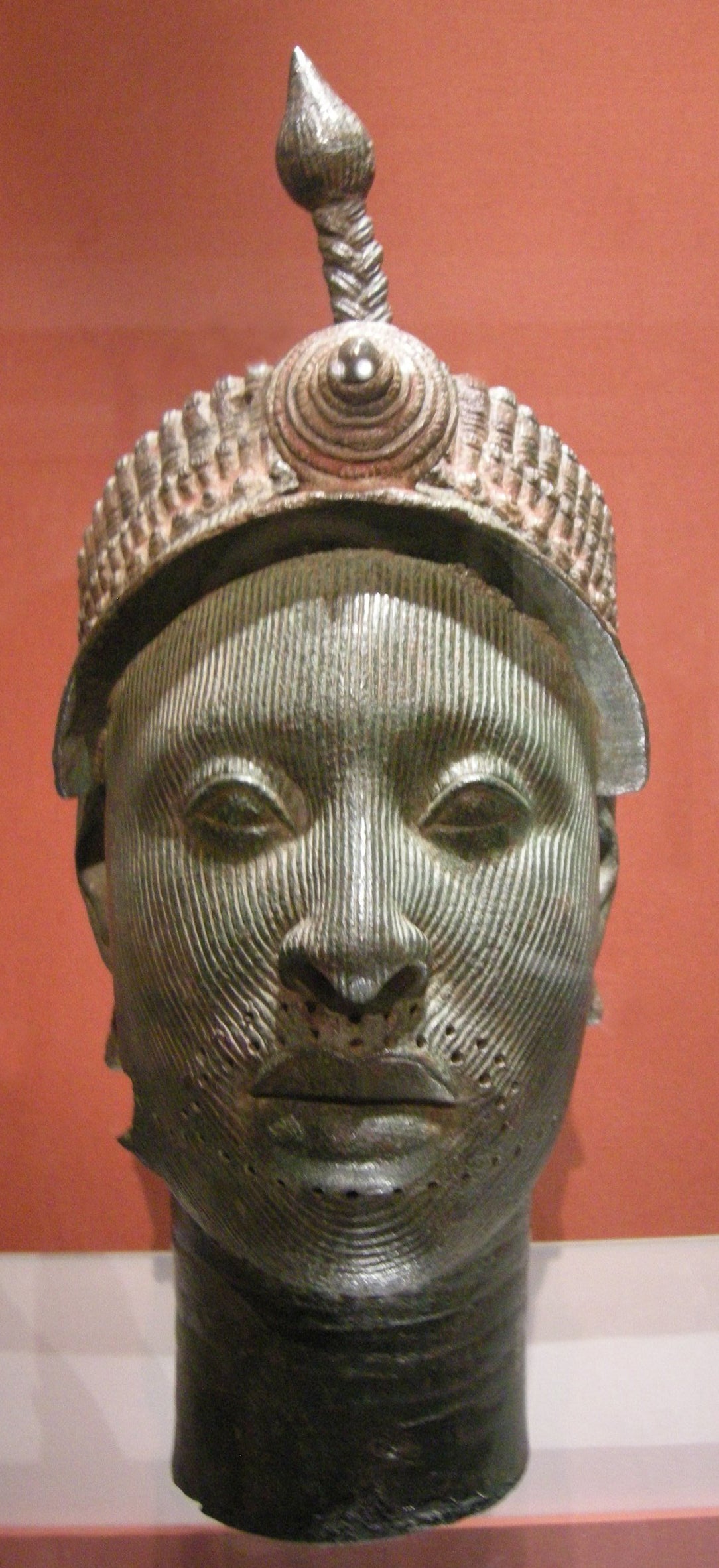Damien Hirst’s replica of one of Africa’s oldest bronze artworks is being slammed for “appropriation”
This story has been updated.


This story has been updated.
Damien Hirst’s latest exhibition in Venice is making headlines for all the wrong reasons.
The British artist’s exhibition “Treasures From the Wreck of the Unbelievable” opened last month in Venice showcasing a range of artwork imagined as debris from a fictional shipwreck discovered off the coast of East Africa in 2008. One of Hirst’s artworks, a golden sculpted head named ”Golden heads (Female)” has caused a stir for its striking resemblance to Ori Olokun, a 14th century bronzehead from Ife, an ancient Yoruba kingdom.
In his notes, Hirst, 51, says the artwork is “stylistically similar to the celebrated works from the Kingdom of Ife,” but Laolu Senbanjo, a New York-based Nigerian artist disagrees with Hirst’s referencing. “There was nothing stylistically similar to Hirst’s “Golden Heads,” they are carbon copies of the original,” said the 2016 Quartz Africa Innovator. “This is not his narrative, not his art and yet he’s profiting off this.” Hirst’s pieces at the exhibition are expected to fetch as much as $5 million.”
Being based in New York, Senbanjo is in a unique position to speak on appropriation of African art outside its borders. Afromysterics, art which he describes as based on “the mystery of the African thought pattern,” has grown popular, leading to collaborations with sportswear giants Nike and global stars including Beyonce.

Beyond the lack of proper attribution, Senbanjo says there’s a larger significance to the inclusion of the Ife bronzehead in Hirst’s sea-themed exhibition. “Ori Olokun is about the Goddess of Wealth and keeper of the Ocean floor. As this entire exhibition is titled, “Treasures of the Unbelievable” where they literally sunk each piece and then resurrected it off the ocean floor, the lack of acknowledging the significance of the meaning of her name, “Keeper of the Ocean Floor” is interesting to me,” Senbanjo tells Quartz. The “extremely watered down version” of the bronzehead’s significance and meaning, he says, is “beyond infuriating.”
But Hirst denies any wrongdoing. “The Treasures are a collection of works influenced by a wide range of cultures and stories from across the globe and throughout history—indeed many of the works celebrate original and important artworks from the past,” a spokesperson for Hirst wrote in an emailed statement. ”A reference to the Ife heads is in the text accompanying the work and in the guide to the exhibition and is integral to the concept of the work.”
Hirst’s timing to use Nigerian art influences in his work for his work might have seemed fortuitous because this is the first Biennale where Nigerian artists have a dedicated exhibition. It means there are more Nigerians around to see his work close-up and question Hirst’s intentions.
Hirst’s bronzehead replica has kicked off conversations around cultural appropriation but, more importantly, for Nigerians, it’s an eerie reminder of 19th century colonial violence which saw British forces plunder some of Nigeria’s most iconic artworks from the ancient Benin kingdom. Those works, now on display across Britain, have steadily been subject of controversy and decades-old campaigns for repatriation. In one instance, “Okukor,” a Benin bronze cockerel, was removed from a Cambridge University dining hall following protests by students that the sculpture’s display was a reminder of a colonial past.
Victor Ehikhamenor, a veteran Nigerian artist also showcasing his own works at Venice Biennale, says the bigger danger with regard to reproducing Nigerian art as Hirst as done is losing ownership to the artworks’ origins. “People will think he [Hirst] is the original creator of such an important artwork. He has a bigger PR machine and probably a wider reach, and the narrative can quickly change in his favor,” Ehikhamenor told HuffingtonPost. “This was an outright copy with very minimal alterations. Don’t copy it outrightly and fictionalize what is a well-known fact. It borders on the line of broad daylight robbery,” Ehikhamenor said, referencing the Benin kingdom raids.
Senbanjo shares similar sentiments and says through modern-day appropriation and without adequate reference and attribution, ancient Yoruba art could be lost for good. “This is erasing our past, claiming what is not theirs and another form of colonization,” he tells Quartz.